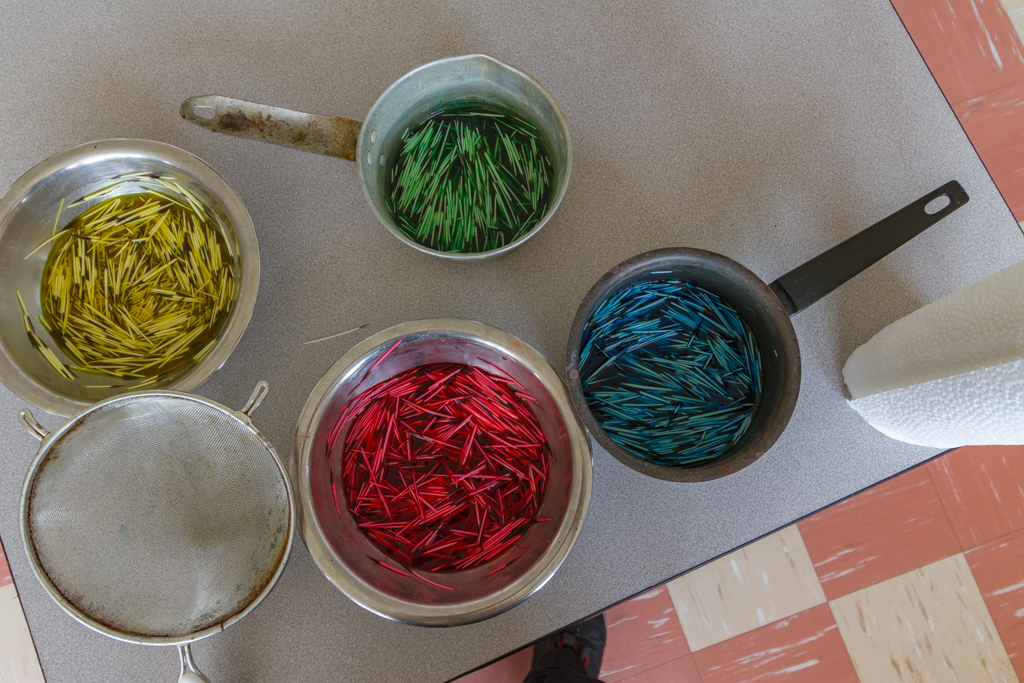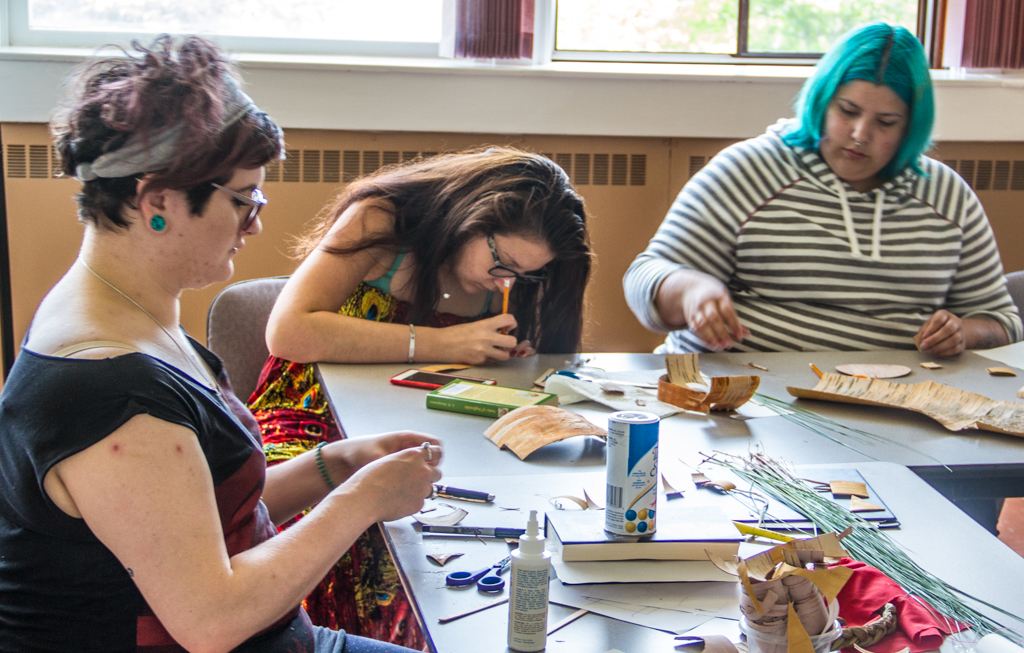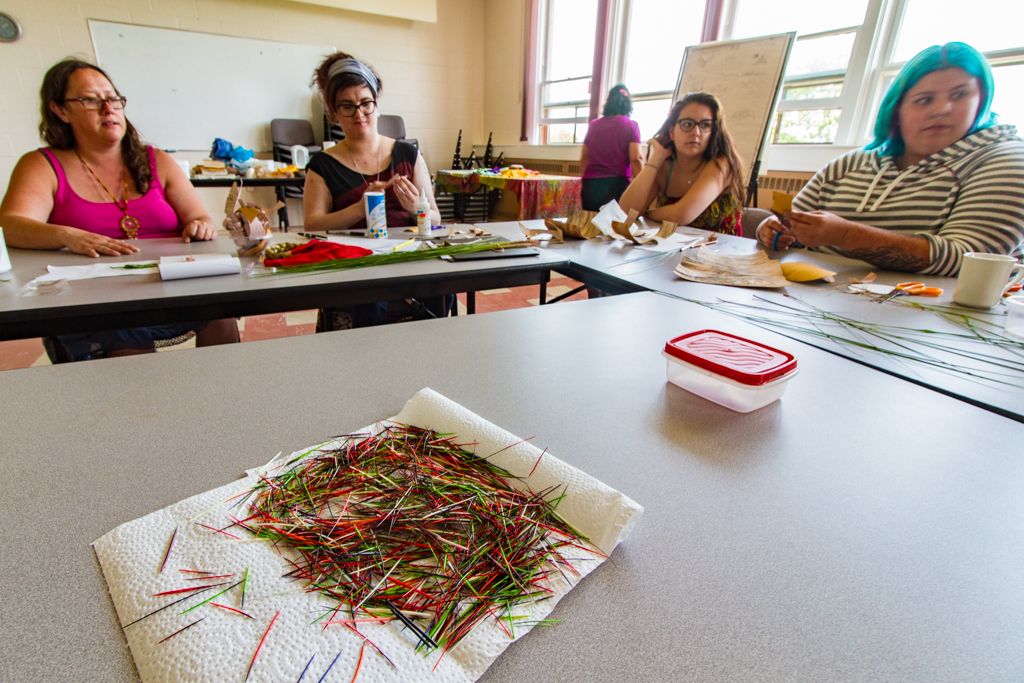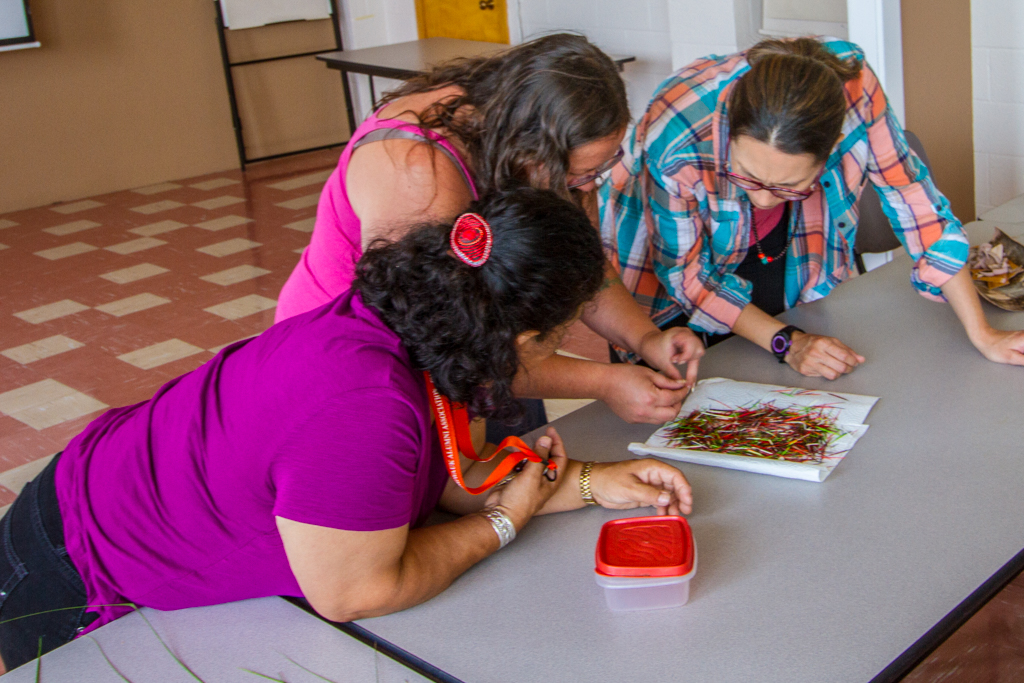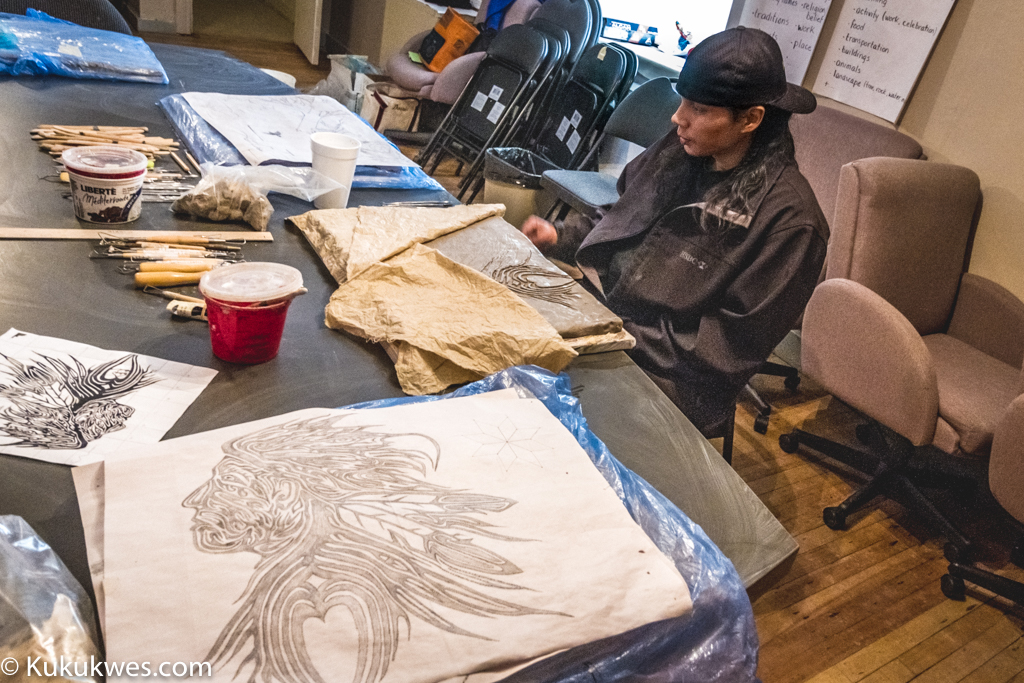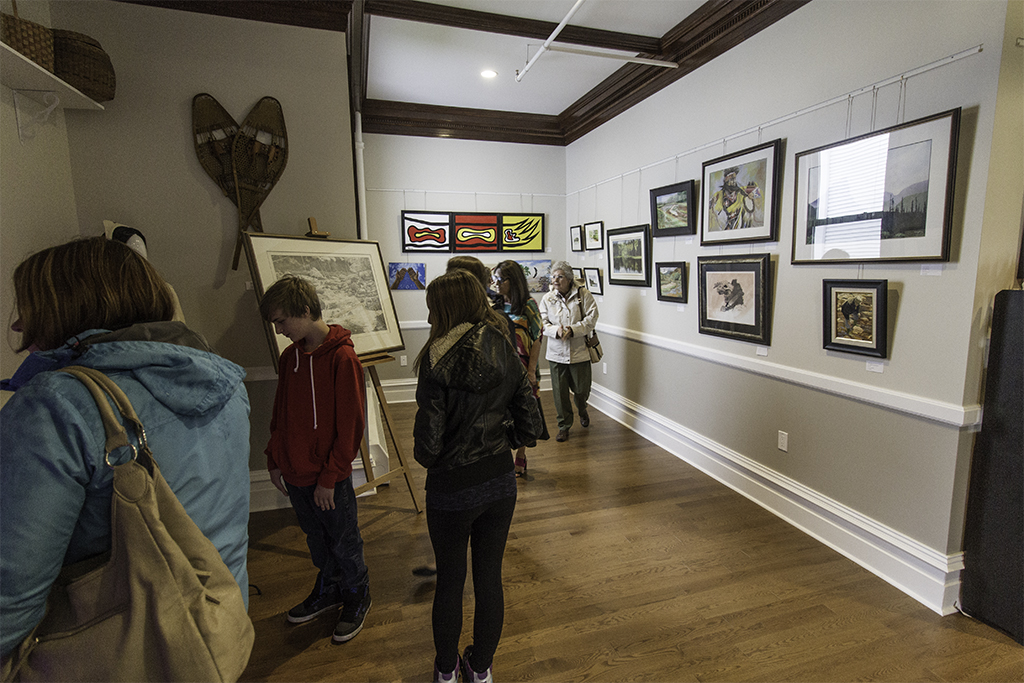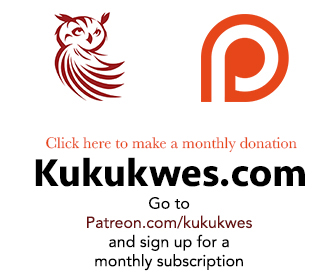
Judy Googoo considers Mi’kmaq quillwork a beautiful but dying art form.
“I think it’s important just to keep our traditional crafts alive,” the 58-year-old from Waycobah First Nation, N.S., said. “It’s just so important we keep them going for our next generation and children.”
Googoo was one of the facilitators who taught a Mi’kmaq quillwork course organized by the Tatamagouche Centre July 3-5. Participants who signed up for the weekend workshop got hands on instruction in creating artwork using traditional Mi’kmaq quillwork techniques and materials.
The $335 fee for the weekend workshop covered instruction, materials, accommodations and meals.
Googoo helped participants with preparing their materials such as dying quills and cutting birch bark to use as a canvas for their designs.
“Like this morning, we went out and picked sweetgrass,” Googoo said. “That way, they get to learn how to pick it. Most of these people here never picked sweetgrass.”
Ishbel Munroe is the Program Director at the Tatamagouche Centre and one of the people who helped organize the weekend workshop retreat for participants.
“We do a lot of work around social inclusion and building rights relations and it basically comes from values of social justice and living the way we fell the creator intends us to,” Munroe explained.
The quill workshop is just one of several workshops aimed at reviving and promoting Mi’kmaq traditions. The other workshops include Mi’kmaq herbal healing and Mi’kmaq medicine.
It was at one of those workshops where Melissa Dempsey, 28, learned about the Mi’kmaq quillwork workshop. She was one of eight participants who signed up to learn more about the Mi’kmaq art form.
“I’ve been curious about porcupine quills for a couple of years now and I’ve been sort of collecting the roadkill quills for about two years,” Dempsey said.
Dempsey is originally from Halifax but is currently living and working in the Cree village of Whapmagoostui, Que. as a teaching assistant. She signed up for the workshop to help her reconnect with her own Mi’kmaq heritage.
“One of my great uncles was a basket weaver and he (was) Mi’kmaq,” Dempsey explained. “I didn’t actually get to meet him. So, I’m just kind of curious about reclaiming different art forms and bringing (them) into the modern day.”
In particular, Dempsey is interested in using quills to create jewellery.
“So for me, it’s more like turning my style meshed with the traditional Mi’kmaq style and seeing where it goes from there.”
As for Googoo, the weekend workshop also gives her an opportunity to brainstorm new ideas to create art that she can sell at her crafts store located in Wagmatcook First Nation, N.S.
“I was up last night thinking about what I was going to make. It’s exciting. I love it.”

